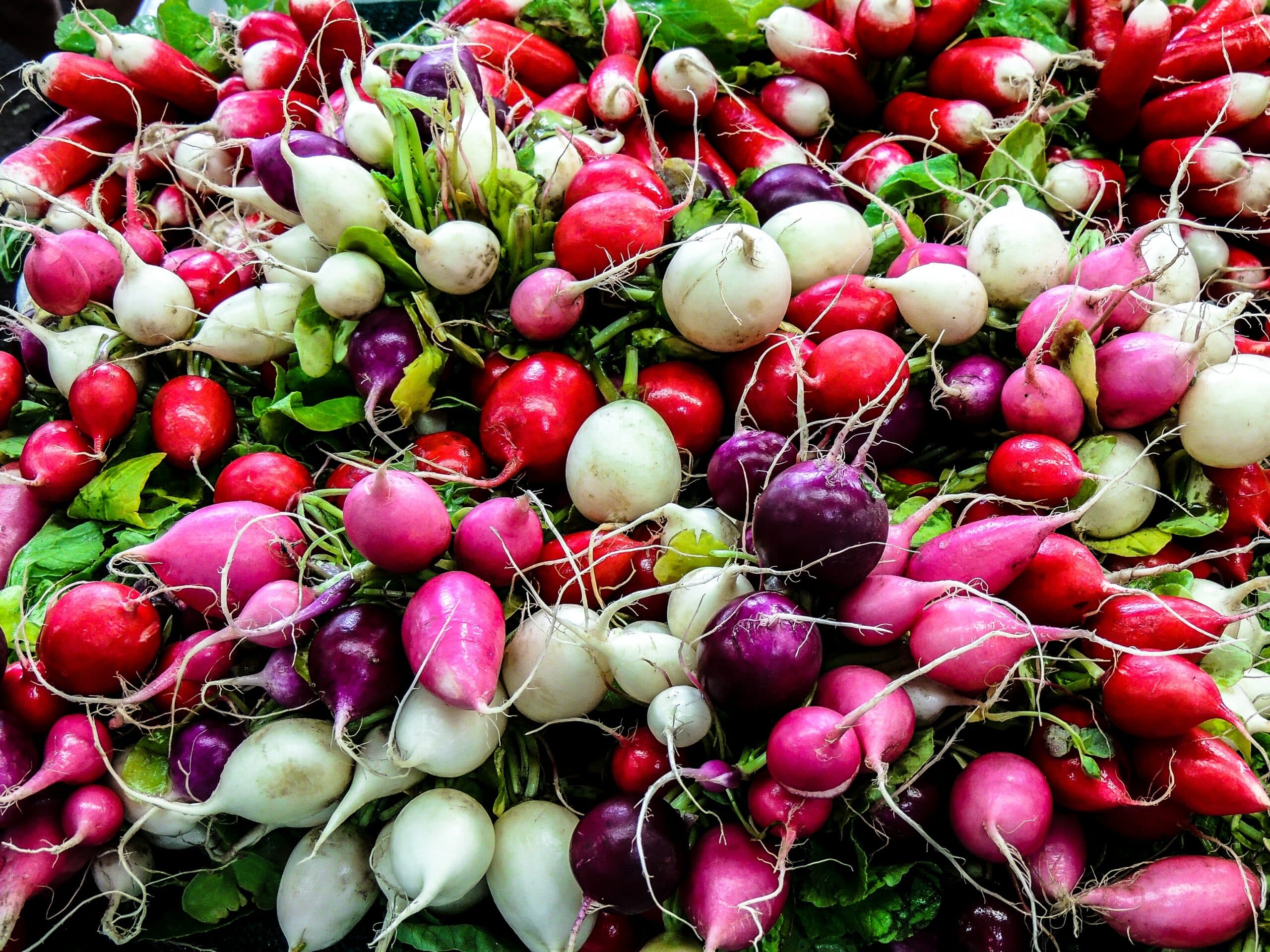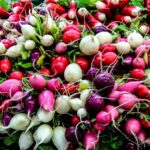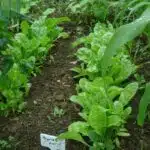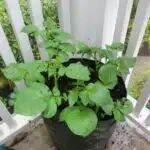Horseradish is a spicy root vegetable that can be used to add flavor and zest to many dishes. A versatile plant, horseradish can be grown in the garden as an annual or as a perennial. This article will provide guidance on how to grow and care for horseradish plants so that you can enjoy this flavorful vegetable in your own garden.
The cultivation of horseradish requires knowledge of its growing requirements, including soil preparation, planting, and harvesting. As a specialist in botany and gardening, I have extensive experience with the cultivation of horseradish plants and am excited to share my knowledge with you. With this article’s advice, you’ll soon be able to successfully grow your own crop of tasty horseradish!
Horseradish is an incredibly rewarding crop that offers a wonderful way to serve others while also providing great flavor to any dish. Whether you’re just getting started with gardening or are experienced with cultivating vegetables, learning how to grow horseradish can open up new possibilities for your home-grown meals. So let’s get started on this journey together into the world of cultivating horseradish!
Choosing An Ideal Location For Horseradish
Where there is a will, there is a way,” rings true when it comes to growing horseradish. Choosing an ideal location for the plant is an important step in the cultivation process. This article will provide helpful advice on where and how to plant horseradish in your vegetable garden.
To begin with, horseradish needs full sun and well-drained soil that has been amended with lots of organic matter. It’s best to find an area that has plenty of room for the plants to spread out and receive adequate sunlight throughout the entire day. Horseradish also prefers cooler temperatures; it’s best to avoid planting them in locations that are exposed to direct sunlight during the hottest part of the day.
Additionally, it’s important to consider how much space you have available for horseradish as well as what other plants may be in close proximity. Horseradish can be invasive and can easily take over a garden bed if given the chance, so make sure you give them enough room from other plants or place them in a container away from other vegetation.
Once you’ve found an appropriate location for your horseradish plants, you’ll need to prepare the soil before planting. This includes adding compost or manure and tilling or loosening up the soil to create good drainage and organic matter content. Follow these steps carefully and you’ll be well on your way towards a successful crop of delicious horseradish!
Preparing The Soil For Horseradish
Once you have selected the ideal location for horseradish, the next step is to prepare the soil. As a specialist in botany and gardening, I recommend taking the following steps to maximize your success with this hardy and flavorful vegetable:
Test the pH – Horseradish prefers a slightly acidic soil between 6.0 and 7.0 on the pH scale. If you find your soil is more alkaline than that, adding sulfur or peat moss to lower the pH can help create an environment where horseradish will thrive.
Amend with organic matter – Adding compost or well-rotted manure will add nutrition to your soil and improve its structure so that it holds water well yet still drains quickly enough for healthy root growth.
Remove weeds – It’s important to remove any weeds or grasses from the area you plan on gardening in as horseradish does not compete well against other plants for resources like moisture and nutrients from the soil. Once these steps are complete, your soil should be prepared for planting horseradish.
The key to successful horseradish cultivation is creating favorable conditions in both soil and location so that your efforts can yield a tasty harvest come fall! With careful preparation of your garden space, you’ll be able to enjoy fresh horseradish throughout much of the winter season as well!
Planting Horseradish
When it comes to planting horseradish, it is similar to sowing the seeds of any other vegetable. Like with many of our ambitions, the old adage that ‘it takes hard work and dedication’ rings especially true here. In order for horseradish to take root, the soil must be prepared correctly.
As a specialist in botany and gardening, I have found that preparing the soil for horseradish requires a combination of nutrients and diligent care. To begin with, the soil should be dug or tilled deeply. This helps to break up clumps of dirt while also allowing oxygen to reach the roots. Next, add organic matter such as compost or aged manure to further enrich the soil and encourage healthy growth.
Finally, it is time to plant! Horseradish can easily be grown from root cuttings or purchased plants; however, you can also purchase small pre-cultivated horseradish plants from nurseries and garden centers if desired. When setting out horseradish roots or plants, space them about two feet apart in rows that are three feet apart from each other. Make sure that you do not bury them too deep into the ground – no more than an inch below the surface – as this could result in poor germination rates. With a little bit of care and attention, you will soon have a thriving crop of your own!
Watering And Fertilizing Horseradish
Growing horseradish can be an incredibly rewarding experience. It’s a hardy, perennial plant that adds a spicy kick to any dish – plus, it can live for years in the right environment. Now that you’ve successfully planted your horseradish, it’s time to learn about caring for your plants. Specifically, let’s discuss how to properly water and fertilize them.
Many gardeners are surprised to learn that horseradish doesn’t require much water or fertilizer. In fact, too much of either can cause the plant to become bitter and woody. That being said, it does need some moisture in order to thrive and occasional fertilizer applications will help promote growth. When watering, use a gentle stream of water at the base of each plant and avoid getting the foliage wet as this can cause rot and mildew. As far as fertilizer goes, apply a balanced 10-10-10 formula once every two months during the growing season – but avoid overdoing it as too much can damage the roots.
When caring for horseradish plants, patience is key! With proper attention, they’ll grow lush and vigorous – just remember to give them enough space so they have plenty of room to spread their roots. You should also be sure to regularly check for pests and diseases and take appropriate action if needed. And finally, don’t forget to harvest them when they’re ready – after all, that’s what all this work is for! With these tips in mind, you’ll be able to enjoy your homegrown horseradish for many years to come!
Caring For Horseradish Plants
Believe it or not, it’s possible to grow your own horseradish in your home garden! As a botanist and gardener, I can assure you that with the proper care and attention to detail, you can enjoy the unique flavor of horseradish from your own backyard.
When caring for horseradish plants, there are some important steps you must take. First, water the plant regularly – usually once a week is enough. In addition to this, fertilizing the plant is also recommended. Depending on the soil quality of your garden and whether or not it needs more minerals or nutrients, you may need to use a fertilizer specific to horseradish plants.
Finally, when caring for horseradish plants, be sure to control weeds that may be competing with them for resources like water and sunlight. Mulching around the plant can help in this regard as well as using an appropriate herbicide if necessary. With these tips in mind, you should have no trouble cultivating your very own horseradish crop!
Controlling Weeds In The Horseradish Planting
Weeding is an important part of maintaining a healthy horseradish crop. Proper weeding techniques can help keep horseradish plants productive and vigorous, while also helping to control competing weeds and grasses. In this article, we’ll discuss some of the best methods for controlling weeds in a horseradish planting.
Hoeing and hand-pulling are two of the most common and effective weed-control methods for horseradish plants. The hoe should be used to remove all shallow-rooted weed seedlings that appear near the plant’s base. This will prevent them from taking root and competing with the horseradish for water, nutrients, and space in the soil. Hand-pulling can also be beneficial, particularly when dealing with larger weeds or thick mats of grasses that may be too large for a hoe to effectively remove.
Mulching is another great way to control weeds in a horseradish plot. An organic mulch such as straw or dried leaves can be spread around the plants to help keep down weed growth. This will provide some insulation against cold weather as well as help retain moisture in the soil so your plants don’t dry out during hot summer days. Mulching also helps reduce erosion due to wind or heavy rains by keeping the soil intact where it belongs – around your valuable horseradish crop!
These are just some of the ways you can control weeds around your horseradish planting. With a little effort, you can ensure that your horseradish has all it needs to thrive without competition from pesky weeds or grasses. Now let’s move on to talk about controlling pests and disease in horseradish so that you can harvest your crop come fall!
Controlling Pests And Disease In Horseradish
Have you ever wondered how to protect horseradish plants from pests and diseases? With proper control, gardeners are able to ensure maximum yields of this pungent root vegetable. As a botanist and gardening specialist, I’d like to share some helpful advice on controlling pests and disease in horseradish.
Pest control begins with prevention. To keep pests away, it’s important to never let the soil become waterlogged or overly dry. Horseradish does best when regularly mulched with hay or straw before winter frost sets in. This keeps weeds away while conserving moisture in the soil during hot summer months.
Keeping an eye on the plant is also essential for pest control; inspect horseradish leaves regularly to identify potential infestations early on. If caught soon enough, minor infestations can be treated with organic methods such as insecticidal soaps or oils or with insecticides registered specifically for use on horseradish crops.
With effective pest control measures in place, gardeners are then ready to address any potential diseases that may arise in their horseradish crop. Common diseases include fungal leaf spots, root rot and mosaic virus; proper sanitation practices like removing dead leaves and crop debris can help prevent these diseases from taking hold. Applying fungicides when necessary can also keep pathogens at bay and ensure healthy harvests of this spicy root vegetable!
Harvesting Horseradish
Harvesting horseradish is a simple yet rewarding process for any gardener. With a little bit of care and attention, you can bring in a plentiful crop of this pungent root vegetable. Here’s what you need to know about harvesting horseradish.
Shockingly, harvesting horseradish couldn’t be easier! Once the plant’s leaves turn yellow in late summer or early fall, the roots are ready for digging. To optimize your harvest, use a spading fork or garden trowel to gently dig up the entire root system. Take care to avoid breaking off pieces of the roots as these are essential for replanting.
After your harvest is complete, you’ll want to rinse off the dirt and store the roots in plastic bags until ready for processing. Horseradish can last up to three months if stored in a cool place with good air circulation. Now that you’ve harvested your crop, it’s time to get down to preserving and storing your delicious horseradish!
Storing And Preserving Horseradish
The storage and preservation of horseradish root is a vital step in the process of harvesting. It is symbolic of the dedication and hard work required to cultivate and enjoy this unique vegetable. As a specialist in botany and gardening, I have often seen gardeners overlook the importance of proper storage when it comes to horseradish.
Unfortunately, this can lead to spoilage and decreased yield in future harvests. For those looking to maximize their yield, there are several steps that should be taken when storing horseradish root. First, it’s important to properly clean the roots after harvest. This should be done by scrubbing off any dirt or debris before storing them in an airtight container. Additionally, any leaves or stems should be removed before placing the roots in the container as they can cause spoilage if left on for too long.
When selecting a container, it’s important to choose one that is designed for food storage as this will help keep moisture out and ensure that your horseradish stays fresh longer. Additionally, you’ll want to make sure your container has adequate ventilation so that your horseradish doesn’t become overly moist during storage. Finally, you’ll want to store your horseradish at temperatures between 35-40 degrees Fahrenheit for optimal freshness.
With these simple steps in mind, you can ensure that your horseradish root stays fresh for months and yields plenty of tasty treats when harvested again down the road!
Companion Planting With Horseradish
Companion planting with horseradish is an effective way to maximize the use of space in your vegetable garden. For example, consider the case of a garden in New England, where horseradish and beets can be planted together. The large leaves of the horseradish plant will provide shade for the small beet tops, while allowing enough sunlight to reach the roots. Additionally, beets have a shallow root system that won’t compete with the deep-rooted horseradish. As a result, both plants can thrive without competing for resources.
In addition to beets, there are many other companion plants that work well with horseradish. Potatoes, onions and garlic all benefit from being planted near horseradish because they help ward off certain pests like carrot flies and cabbage worms. As an added bonus, these crops will also add flavor and nutrients to horseradish dishes. Plus, their unique foliage will provide visual interest in your garden beds.
Finally, companion planting also helps you get more out of your harvest by providing different types of nutrition for your plants throughout the growing season. This is especially true when you combine multiple crops from different families like potatoes and kale or radishes and carrots – two veggies that happen to grow well together with horseradish! By combining different types of plants in close proximity, you can ensure that each crop will receive plenty of nutrients throughout the season and produce higher yields come harvest time.
Common Varieties Of Horseradish
Believe it or not, horseradish is an incredibly easy plant to grow. It’s a perennial that can produce for many years in the same spot, and requires minimal maintenance once it’s established. And what’s more, there are several varieties to choose from – some with a milder taste than others. As a botanist and gardener, today I’ll be discussing the common varieties of horseradish available for home gardeners.
One of the most popular types of horseradish is ‘Maliner Kren’ which is grown in Germany and features a mild flavor with a slight kick. The American variety known as ‘Bohemian’ is also popular among home gardeners because of its strong taste and unique aroma. There’s also ‘Red Cloud’, which offers a slightly sweet flavor that many find appealing. Furthermore, if you want to try something different there are also unique cultivars like ‘Variegata’ – one that has green-and-white marbled leaves – and ‘Atropurpurea’, which features purple leaves and stems.
No matter which variety you choose, it’s important to keep in mind that horseradish does require full sun for optimal growth so make sure to place your plants accordingly when planting them. Additionally, if you’re looking for higher yields then fertilizing every couple months during the growing season should help increase production significantly. With this knowledge under your belt, you should now have all the information needed to get started with growing your own delicious horseradish!
Troubleshooting Horseradish Growth Problems
It is important to be aware of the potential problems that can arise when growing horseradish. According to the National Gardening Association, an estimated 60% of gardeners have had difficulty growing horseradish in the past. As a specialist in botany and gardening, I understand the importance of being prepared for any issues that may arise during horseradish cultivation.
In this section, we will discuss some common troubleshooting strategies for growing horseradish plants. First and foremost, it’s essential to ensure that your plant has adequate drainage. If you don’t provide enough drainage, your plant will become waterlogged and be more prone to disease or root rot. Additionally, make sure you are planting your horseradish in well-draining soil with plenty of nutrients so it can thrive.
It is also important to note that horseradish can be susceptible to various diseases if proper precautions aren’t taken. Fungal diseases such as white mold, downy mildew, and powdery mildew can all cause damage to your horseradish plants if left untreated. Therefore, regularly inspecting your plants for signs of disease and taking appropriate action is necessary for successful growth. With these tips in mind, you should have no trouble keeping your horseradish healthy and happy!
With these considerations for troubleshooting growth problems taken into account, gardeners should be equipped with the knowledge to prevent any future issues related to their horseradish cultivation endeavors – allowing them to reap the potential benefits from their hard work!
Potential Benefits Of Growing Horseradish
While there are undeniable challenges associated with growing horseradish, the potential benefits can’t be overlooked. A horticulturalist will tell you that, with a little know-how and attention to detail, those drawbacks can be minimized – making this an ideal crop for the modern gardener.
To start off, horseradish is a hardy plant that doesn’t require much in terms of soil preparation or fertilization. This makes it relatively easy to grow at home, even if you’re not necessarily a seasoned green thumb. What’s more, it’s resistant to most disease and pests – meaning you don’t need to worry about spraying pesticides or battling disease-causing organisms.
The most noteworthy benefit of horseradish is perhaps its culinary versatility. Its sharp flavor adds zing to salads, sandwiches and sauces; while its crunchy texture offers an interesting contrast when mixed with other ingredients. It also has medicinal benefits; horseradish oil is known to have anti-inflammatory properties which can help reduce joint pain and improve circulation in the body. Plus, it’s rich in antioxidants which may help boost immunity and fight off infection.
So, if you’re looking for an easy-to-grow vegetable that delivers both nutritional value and culinary appeal – horseradish might just be the perfect choice. With the right care and maintenance, this hearty crop can provide plenty of tasty rewards in your garden!
Replanting Horseradish
Replanting horseradish is an important part of the growing process and can be a great way to ensure a continuous supply of the flavorful vegetable. While it is possible to plant horseradish roots directly into the ground, it is better to start with transplants as they tend to produce higher yields. The key is to find or create ideal conditions for replanting so that new growth will thrive.
For best results, the soil should be moist but not soggy and there should be plenty of organic matter available for root growth. When planting a new horseradish crop, you should always make sure that the roots are healthy and free from disease. Additionally, you should space your plants about 18-24 inches apart in order for them to get adequate sunlight and water.
It’s also important to monitor your horseradish plants throughout their growing season and make sure they are receiving enough moisture and nutrients. As with any vegetable garden, there may be times when pests or disease threaten your crop but with proper care, you can successfully replant horseradish year after year without issue. With its unique flavor and high nutritional value, horseradish makes a delicious addition to any garden!
Using Horseradish In Cooking
Horseradish is an incredibly pungent and flavorful condiment that can add a unique kick to any dish. It’s also relatively easy to grow in the vegetable garden, as long as you know the techniques and tips for successful cultivation. In this 15th step, we’ll explore ways of using horseradish in cooking:
One of the most popular uses for horseradish is as a condiment for beef dishes. It adds a spicy, sharp flavor that really stands out, making it the perfect accompaniment for steaks or roasts. Here are some ideas for incorporating horseradish into your cooking:
• Add grated horseradish to sauces or soups just before serving • Create a classic steak sauce by mixing horseradish with mayonnaise • Blend it with cream cheese and serve on top of crackers • Mix it with olive oil, garlic and lemon juice for a delicious salad dressing • Make a unique twist on macaroni & cheese by stirring in some grated horseradish during preparation.
The versatility of horseradish makes it an ideal ingredient to experiment with in the kitchen. Whether you’re adding it to sauces or simply serving it as part of your main dish, the unique flavors will liven up any meal and make it truly memorable!
Frequently Asked Questions
What Type Of Soil Is Best For Growing Horseradish?
When it comes to cultivating horseradish, the type of soil used is critical for successful growth. The ideal soil for growing horseradish is one that has good drainage and a pH level between 6.0 and 7.5. It’s also important to ensure that the soil isn’t too rich in nitrogen – otherwise, you’ll end up with an abundance of foliage instead of root growth.
Fortunately, horseradish is a hardy plant that can thrive in a variety of soils; however, soils that are slightly alkaline are best as they don’t tend to become waterlogged or hold too much moisture. Soils that aren’t well-draining should be improved by incorporating organic matter such as compost or aged manure into the ground prior to planting. Additionally, you may want to consider adding lime or wood ash to help raise the pH level of acidic soils.
By taking time to choose the right soil for growing horseradish, you’ll be setting yourself up for success when it comes time to harvest your crop. With proper care and attention paid towards selecting the right soil conditions, you will be rewarded with hearty and flavorful horseradish roots in no time!
How Much Water And Fertilizer Should Be Used For Horseradish?
When it comes to growing horseradish, the right amount of water and fertilizer is key. Botanically speaking, horseradish is a hardy perennial that can tolerate a variety of soil types, but it prefers moist soil. It’s important to note that too much water or fertilizer can cause root rot and other plant diseases. When caring for a horseradish plant, you should be mindful of the type of soil and how much water and fertilizer you use.
When it comes to watering your horseradish plant, it’s best to keep the soil evenly moist throughout the growing season. During hot weather, you may need to water more frequently; during cooler weather, less often. Aim for about 1 inch per week. Additionally, mulching around the base helps retain moisture in the soil and protect against weeds.
Fertilizing your horseradish plant requires careful consideration as well. While fertilization isn’t necessary for healthy growth, it does help ensure vigorous growth and bigger yields come harvest time. Use a balanced 10-10-10 fertilizer once or twice during the growing season; be sure not to exceed recommended application amounts on the label as this could lead to root rot or other problems with your plants.
In summary, when caring for your horseradish plants make sure they’re receiving adequate amounts of water and fertilizer without overdoing either one; too much of either could result in unhealthy plants which could reduce yields come harvest time. Remember: use a balanced 10-10-10 fertilizer only once or twice during the growing season and keep the soil evenly moist throughout by providing about 1 inch of water per week.
How Deep Should Horseradish Be Planted?
Planting horseradish at the right depth is essential for its success. According to research, approximately 80% of all plants that die in the garden are due to incorrect planting depth. For this reason, it’s important to ensure that horseradish is planted correctly for optimal germination and growth.
When planting horseradish, the roots should be placed 1-2 inches below the surface of the soil. If you’re using a container, it should be at least 12 inches deep with plenty of drainage holes at the bottom. Additionally, it’s important to cover the roots with enough soil so they don’t dry out or suffer from frost damage during cooler months.
To make sure your horseradish plants get off to a good start, use a quality compost or fertilizer when planting them and water regularly throughout the growing season. This will help ensure that your plants have access to all of the nutrients they need for healthy growth and development. With correct care and attention, your horseradish plants will thrive in no time!
What Are The Best Companion Plants To Grow With Horseradish?
When cultivating horseradish in the vegetable garden, it’s important to consider companion plants that could benefit it. Companion planting is an age-old practice of interspersing different species of plants together for mutual benefit. To optimize growth and yield, here are five ideal companion plants for horseradish:
Garlic provides a natural pest deterrent as well as beneficial nitrogen compounds to the surrounding soil when it decomposes.
Potatoes produce beneficial allelopathic compounds, which stifle the growth of certain weeds and pests.
Tomatoes have been known to reduce diseases in horseradish, as they release compounds into the soil that inhibit pathogens from attacking other nearby plants.
Mustard greens can attract predatory insects to help control pests in your garden, while also enriching the soil with valuable minerals like phosphorus and calcium.
Soil fertility and quality must be taken into consideration when choosing companion plants for horseradish; thus, it’s best to choose those with similar nutrient needs and preferences. For instance, both horseradish and garlic prefer soils on the acidic side with good drainage. By selecting companion plants that share these traits, you’ll ensure optimal growth and yield from your horseradish crop. Additionally, these companions can act as an additional source of nutrition should any deficiencies arise during cultivation.
How Long Does It Take For Horseradish To Mature And Be Ready For Harvesting?
The maturation process of horseradish is a fascinating one and it’s worth taking the time to learn about. The plant itself symbolizes strength, resilience and longevity – all traits that make it an ideal addition to any garden. As a root vegetable, its maturation period is relatively short and easy to track, making it a great choice for those looking for a quick harvest.
So how long does it take for horseradish to mature? Generally speaking, most varieties will be ready for harvesting within 4-6 months after planting. During this time the roots should reach maturity and have a spicy aroma, although you may need to allow some extra time if your climate is cooler or wetter. You’ll know when they’re ready as they will be around 1-2 inches in diameter at the base of the stem.
In order to maximize your yield, it’s important to keep up with regular maintenance during this time period such as weeding and fertilizing. Additionally, you’ll want to prevent overcrowding by thinning out any overgrown plants so they have adequate space to grow. Taking these steps will help ensure that your horseradish matures quickly and yields an abundant harvest!
Conclusion
As we have seen, horseradish is an easy-to-grow vegetable that requires little maintenance and provides a lot of flavor. It is important to choose the right soil for your horseradish plants, and provide them with sufficient water and fertilizer. Planting horseradish at the right depth will ensure that the roots can grow properly. Additionally, companion planting can help to boost the growth of your plants.
Horseradish is symbolic of both strength and resilience. In some cultures, it is used as a symbol of protection. Much like its symbolism, horseradish can withstand extreme weather conditions and still produce a flavorful harvest. Growing horseradish in your garden can be rewarding, especially when you use companion plants to help them thrive.
Overall, growing horseradish in your garden is a great way to add flavor to your dishes without much effort. Taking the time to learn about how to properly grow this spicy root vegetable will reward you with a bountiful harvest for years to come!





























